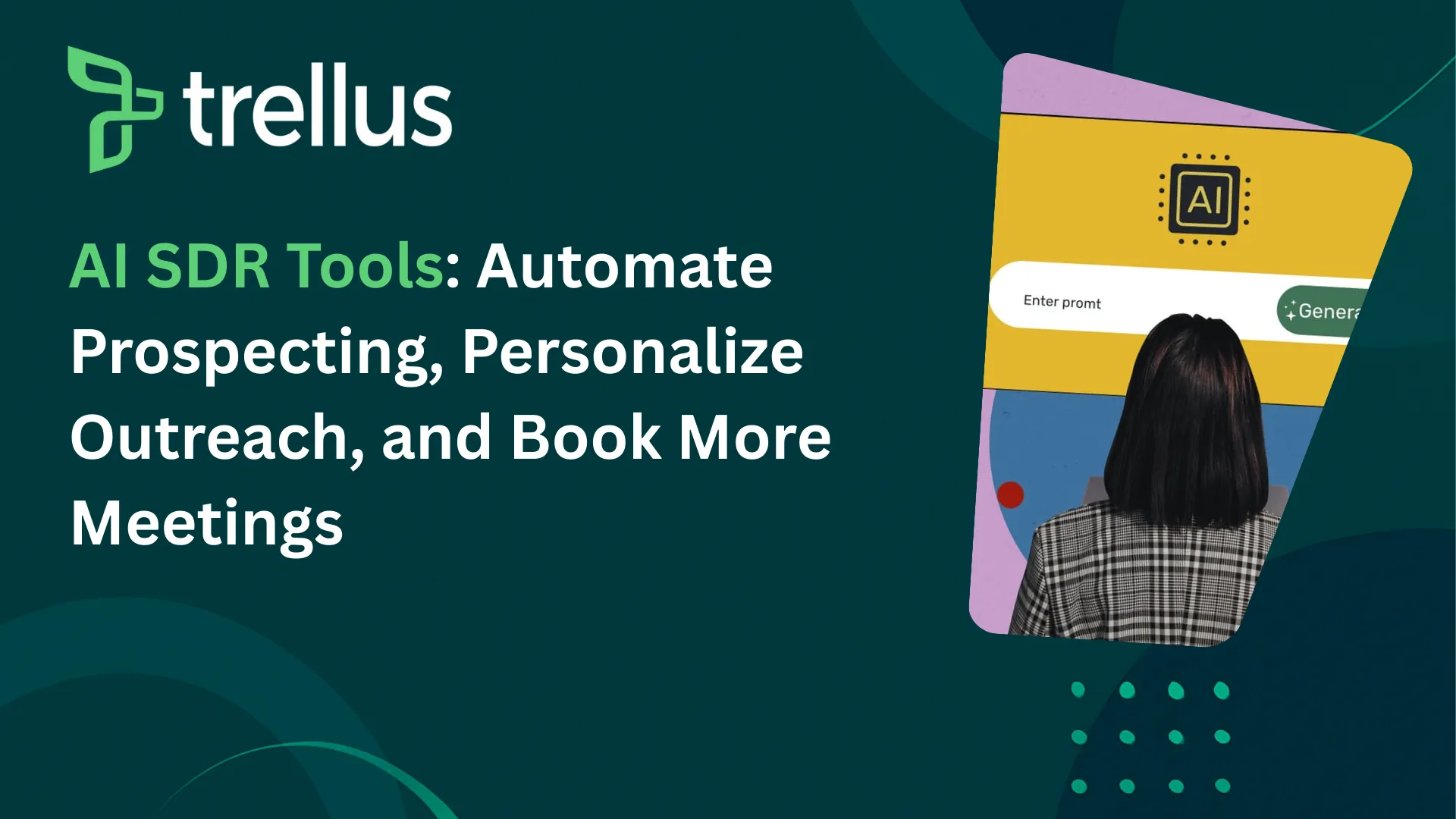
Our Top Picks


Cold calling remains one of the most effective ways to generate leads and close deals, but sales teams today face a growing challenge: low connection rates.
Prospects don’t always pick up, and sales reps spend too much time waiting for voicemail prompts or dealing with unanswered calls.
So, if your sales calls business is, let’s say, working through an auto dialer, that means you are looking at one opportunity at a time.
It’s not the best use-case, but in bigger companies when enough budget isn’t allocated to the tools, and the SDR team is made to go through the grueling task of dialing hundreds of prospects all day long, an auto dialer does have its limitations.
The reality is that successful sales teams need a way to increase the number of meaningful conversations they have each day.
This is where parallel dialing changes the game. The baseline concept is that you are looking at simultaneous calling to multiple contacts. Whoever picks up the call first, gets connected to your sales rep.
However, the term ‘what is a parallel’ dialer has a lot more to it than what meets the eye. And this post is going to fill you in on everything you need to know about what is parallel dialing, the basic concept, and whether you should transition to a parallel dialer, if your business is already using an auto dialing software.
Let’s see what we’ve got in store for ya’
What Is a Parallel Dialer?

A parallel dialer is a dialing system that allows sales reps to call multiple prospects at the same time.
Unlike traditional click-to-call solutions, which require dialing numbers one at a time, parallel dialing places multiple outbound calls simultaneously. This method ensures that reps spend less time waiting for connections and more time talking to live prospects.
Parallel dialing is designed to reduce idle time, boost efficiency, and ensure sales teams maximize their outreach efforts.
Through screening out voicemails, disconnected numbers, and busy signals, only live calls are routed to available sales reps, helping them make the most of their working hours.
Why Do Sales Teams Need a Parallel Dialer?
Sales teams that rely on outbound calling often struggle with inefficiencies that slow down their efforts.
A parallel dialer eliminates many of these bottlenecks, making it easier to connect with more prospects in less time.
1. Low Dialing Volume Limits Outreach
Using a traditional dialing method, an SDR (Sales Development Representative) may only manage 30–40 calls per hour.
This limited volume makes it difficult to reach enough prospects to hit sales targets. A parallel dialer increases call volume dramatically, allowing reps to make hundreds of calls in a single day.
2. Manual Dialing Wastes Time
When SDRs work through large prospect lists, manually dialing each number and waiting for connections eats up valuable time.
Every second spent waiting for a ringtone or voicemail message is time that could be used to talk to a real prospect. Parallel dialing removes this inefficiency, enabling more conversations per hour.
3. Coaching Becomes Challenging at Scale
As outreach volume grows, sales managers have a harder time reviewing calls and providing feedback. With a parallel dialer, call recordings and analytics help managers offer targeted coaching, ensuring SDRs improve their pitch and approach.
Who Should Use a Parallel Dialer?
A parallel dialer is a valuable tool for various sales teams, but it is especially beneficial for:
Sales Teams With Large Prospect Lists
Companies targeting a broad audience need a way to scale outreach quickly. A parallel dialer enables reps to reach multiple prospects at once, significantly increasing the number of daily conversations.
SDRs Handling High Call Volumes
When outbound calling is a primary sales channel, high call volume is essential for success. SDRs can use a parallel dialer to maintain consistent outreach without being slowed down by manual dialing.
Teams Dialing Homogeneous Lists
When reaching out to similar prospects with a uniform message, parallel dialing ensures consistent delivery. This approach is particularly useful for campaigns targeting a specific industry or buyer persona.
Experienced Sales Professionals
Reps who can quickly adapt to live conversations benefit most from parallel dialing. Since multiple calls happen at once, SDRs must be prepared to shift between different prospects and personalize conversations on the spot.
Organizations With Well-Defined Sales Processes
Parallel dialing works best when teams have structured workflows in place. With clear call scripts, follow-up processes, and data-driven decision-making, sales reps can handle high call volumes effectively without sacrificing quality.
Is the Investment in a Parallel Dialer Worth It?
Some businesses hesitate to invest in a parallel dialer due to the cost. However, the increased efficiency, improved contact rates, and higher conversion potential make it a worthwhile investment. While parallel dialing and predictive dialing solutions may come with higher price tags, the return on investment far outweighs the initial expense.
How to Use Parallel Dialing Effectively
As we mentioned earlier a couple of times, parallel dialing works by dialing multiple numbers simultaneously and filtering out anything that isn’t a live call. Once a prospect answers, the system connects them with an available agent.
Sales teams using this technology should ensure that:
- Agents have effective opening lines ready to engage prospects immediately.
- CRM integration is in place so reps can access prospect data before each conversation.
- Call pacing is adjusted based on agent availability to prevent overwhelming the team.
What Happens if Two People Pick Up at the Same Time?
A common concern with parallel dialing is the possibility of two prospects answering simultaneously.
Fortunately, modern systems manage this seamlessly.
If multiple people pick up, the dialer ensures that only one call is connected to an agent, while the other call is routed to another available rep or placed back into the queue.If no agents are available, the system temporarily pauses dialing to prevent unanswered connections.
Doing so ensures that no prospect is left waiting on the line without a representative to speak with them.
Benefits of Parallel Dialing

Switching to a parallel dialer provides a range of benefits that significantly improve outbound calling efficiency
Of course, the specific benefits depend on your company's requirements. But if we were to round up a couple of highlights for you, take a look below to understand how transitioning to a parallel dialing tool online might benefit in the long run:
.1. Increased Efficiency and Productivity
Parallel dialing allows sales teams to make more calls in less time, leading to greater productivity.
Since the system automatically dials numbers and screens out non-answers, reps spend more time speaking with actual prospects rather than waiting for connections.
2. Improved Contact Rates
A higher number of dialed calls increases the likelihood of reaching prospects. Since unanswered calls and voicemails are filtered out, agents only spend time on conversations that matter.
3. Scalability and FlexibilityFor businesses looking to scale, parallel dialing is a game-changer.
Without the need for additional resources, companies can dramatically expand their outreach and connect with more leads.
4. Analytics and ReportingModern parallel dialers provide real-time analytics, helping sales managers track performance, monitor key metrics, and make informed adjustments to improve conversion rates.
5. Enhanced Lead ManagementWith CRM integration, reps have access to valuable lead data before making a call.
This ensures that every interaction is informed and tailored to the prospect’s needs, improving both the customer experience and sales outcomes.
Parallel Dialing Laws in ColoradoIt’s crucial to stay compliant with state-specific calling laws when using a parallel dialer.
In Colorado, telemarketing laws require businesses to follow regulations on call frequency, consent, and do-not-call lists. Companies using parallel dialing must ensure they adhere to these guidelines to avoid legal issues and maintain ethical outreach practices.
FAQS - Frequently Asked Questions About Parallel Dialers
1. Is it absolutely necessary to use a parallel dialer? What if my business has an auto dialer instead?
Whether a business needs a parallel dialer depends on its sales volume, efficiency goals, and existing dialing setup.
While an auto dialer can work well for some teams, a parallel dialer is often a game-changer for those looking to maximize live connections. Here’s how they compare and when you might want to upgrade.When an Auto Dialer Might Be Enough
- Lower Call Volume – If your team isn’t making thousands of calls daily, an auto dialer may provide enough efficiency.
- Smaller Sales Teams – A business with just a few reps might not need the power of a parallel dialer.
- Highly Personalized Calls – If you’re focusing on relationship-building with deep research before each call, an auto dialer allows more control.
- Compliance Concerns – Some industries (like financial services) have strict regulations that limit the use of parallel dialing.
When a Parallel Dialer Makes a Big Difference
- High-Volume Sales Teams – If reps need to make hundreds or thousands of calls per day, a parallel dialer ensures they spend less time waiting and more time selling.
- Lower Contact Rates – If you’re struggling with low pickup rates, dialing multiple numbers at once helps reach more prospects faster.
- Outbound Call Centers – Businesses that rely heavily on cold calling or follow-ups benefit from the speed of a parallel dialer.
- Reducing Rep Downtime – Parallel dialers eliminate wasted time spent listening to voicemails or waiting through ringing.
2. Can I use a parallel dialer with my existing CRM?
Yes, most modern parallel dialers integrate with popular CRMs like HubSpot, Salesforce, and Zoho.
This allows seamless call logging, automated workflows, and better tracking of sales activities.
On a separate note, we strongly recommend that you always check if your CRM supports parallel dialing before making a switch.
3. Will a parallel dialer increase my connection rates?
Absolutely. Parallel dialers call multiple numbers at once, ensuring reps spend less time waiting and more time talking to actual prospects.
If your team struggles with low answer rates or excessive voicemail drops, a parallel dialer can significantly boost live connections.
4. Are parallel dialers compliant with TCPA and other regulations?
It depends on how they are configured. Some regulations, like TCPA (Telephone Consumer Protection Act) in the U.S., have restrictions on automated dialing to mobile numbers without consent.
Many parallel dialers offer built-in compliance tools to ensure adherence to these laws, but it’s important to verify before use.
5. What’s the main downside of using a parallel dialer?
While parallel dialers improve efficiency, they can sometimes lead to dropped calls if too many prospects pick up at once and not enough reps are available.
In addition to that, we'd say that they may not be ideal for highly personalized sales approaches, as reps have less time to prepare between calls.
Summing It Up
Parallel dialing is one of the most effective tools for sales teams looking to maximize their outreach efforts.
Perhaps one of the biggest advantage to these programs over regular dialers is the time saving factor. It eliminates wasted time, improves contact rates, and provides the scalability needed to grow a business.
With the right approach, teams can use parallel dialing to create more opportunities, engage more prospects, and ultimately, close more deals.
For companies focused on outbound sales, adopting a parallel dialer can make a significant difference in performance, efficiency, and overall success.


.jpeg)




